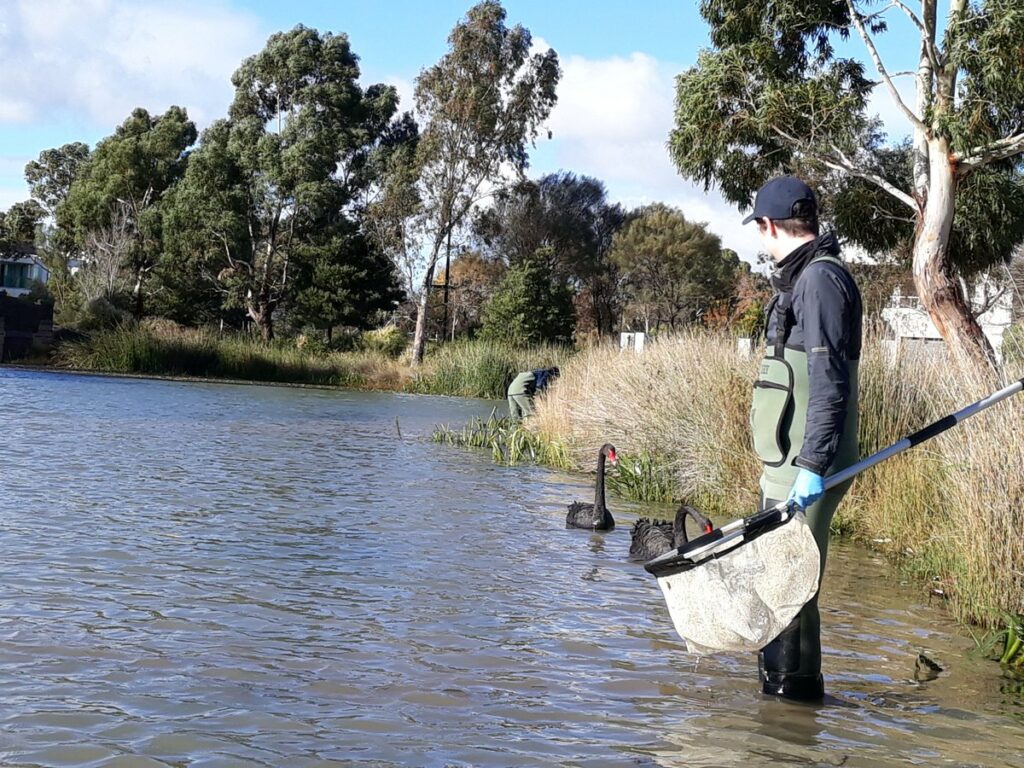How does storm-water runoff affect aquatic organisms?
Storms can be problematic for organisms living in urban aquatic environments, as the stormwater sweeps large quantities of metal contaminants from our cities and roads into stormwater drains, and out into the ecosystems of local wildlife. The effect is a short, but intense, exposure to these toxins.

Our current water quality guidelines for these urban aquatic environments fail to take into account these short-but-intense “pulse” events, assuming that data from chronic metal exposure tests are able to predict the effects of short-term exposure on the local ecosystem. The fact that aquatic animals ingest metals through their diet further complicates the question of how these exposure affect the resident wildlife.
To better understand these impacts on urban aquatic environments, AINSE PGRA scholar Sarah McDonald, along with collaborators from The University of Melbourne, RMIT University and ANSTO, investigated the response of two particular aquatic organisms – the glass shrimp and the blue-spot goby – to metal pollutants at the same exposure concentrations and patterns of storm events.
Radiotracing is an effective research tool for tracking how metals move through an organisms and in which organs they are deposited. In the ANSTO Aquatic Ecology lab, measurements were taken from shrimp and fish that were exposed to two different metals (cadmium and zinc) during multiple short-term pulses.
The study showed that while shrimp readily accumulated the contaminant metals directly from the water, the fish were resistant at first – until diet was taken into account. When the fish were fed, they assimilated almost five times the amount of both metals than the shrimp, possibly due to a lack of time between exposures to eliminate the metals from their body.
Developing a greater understanding of the metal uptake among a variety of species will assist in informing current and future stormwater management regimes and guidelines. In particular, this research highlights the necessity of including pulsed toxicity tests when deriving water quality guidelines.
To read more about the technical details of Sarah’s research, please see page 17 of the 2019 AINSE Annual Report.
Next Student Research Spotlight: Ben Humphreys (Intelligent coatings: creating surfaces that respond to their surroundings)
